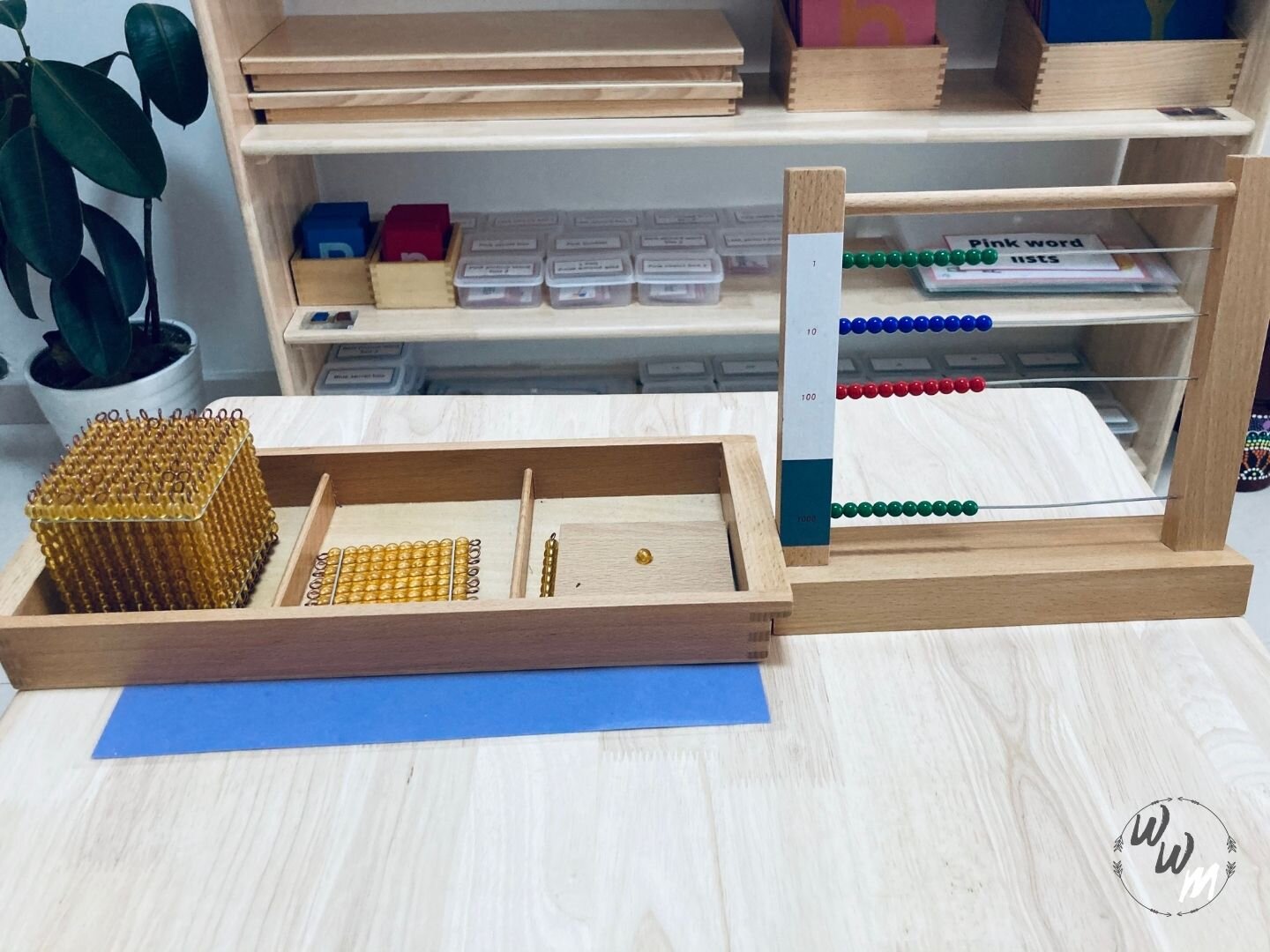The Abacus: bridging exercise
What does the Montessori Abacus look like?
The Montessori Abacus has four horizontal rods on a wooden frame that stands upright. There are 10 colour coded beads on each rod - the units are green, the tens are blue, the hundreds are red and the thousands are green. The units are at the top and the thousands are at the bottom. There are numbers on the left-hand side of the abacus - 1, 10, 100, and 1000 from top to bottom in line with each corresponding rod.
The directress uses the golden bead presentation tray as well for this activity.
How is the bridging exercise done with the abacus?
This activity helps the child to associate the presentation tray with the beads on the abacus. The directress introduces the abacus to the child, ensuring all of the beads are pushed to the left-hand side. She then brings the presentation tray forward, she shows the child 1-unit bead and reminds him what it is.
The directress then brings across one green unit on the abacus and compares the two by holding the golden unit bead next to it. She tells the child, “these are the same; this 1 green unit bead stands for 1 golden unit bead” She replaces the beads.
She then picks up a golden 10-bead bar and reminds the child what it is. The directress brings across 1 blue 10-bead from the abacus and compares the two. She tells the child, “these are the same; this 1 blue bead stands for 10” She replaces the beads.
The directress continues in the same manner by bringing across 1 red bead and comparing it with the 100 bead-square. She tells the child, “these are the same, 1 red bead stands for 100” and replaces the beads.
She then brings forward 1 green 1000- bead and compares it to the 1000-bead cube, she tells the child, “these are the same, 1 green bead stands for 1000” and replaces the beads and puts the presentation tray away.
The directress does a three-period lesson with the child on the abacus reinforcing the quantities. She spends much time in the second period. She then pushes all the beads to the left-hand side, and brings 1 unit bead to the right, and asks the child to name it. She repeats with the 10, 100, and 1000 beads, pushing them back once completed. The directress consolidates if the child has grasped the concept.
The Abacus: bridging exercise
Looking for more Montessori activities?
Here is a list of all the Montessori Maths activities including Early Maths, Introduction to the Decimal System, Seguin Boards, The Hundred Board, The Short Bead Stair, Bead Chains, The Snake Game, Group Operations, The Large Number Rods, Recording with the Small Number Rods, The Short Bead Stair, The Strip Boards, The Boards, The Stamp Game, The Abacus, The Dot Game, and Fractions. Just click on the page you want to learn about to go there.
Early Maths
Introduction to the Decimal System
The Short Bead Stair
Seguin Boards
The Hundred Board
Bead Chains
The Snake Game
Group Operations
Large Number Rods
Recording with the Small Number Rods
The Short Bead Stair
The Strip Boards
The Boards
The Stamp Game
The Abacus
Operations with the Abacus: Static addition (without change)
Operations with the Abacus: Static multiplication (without change)
Operations with the Abacus: Static subtraction (without change)

